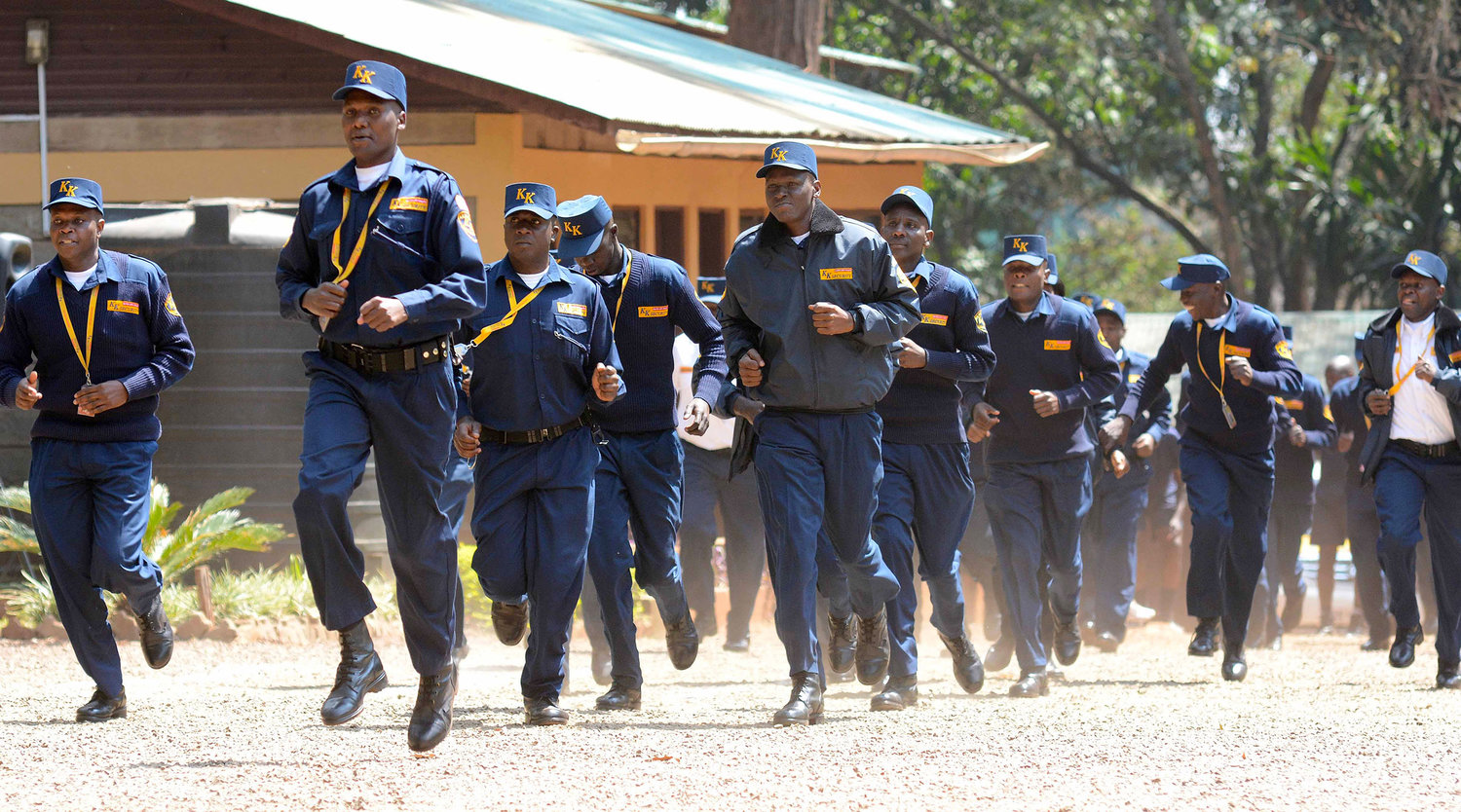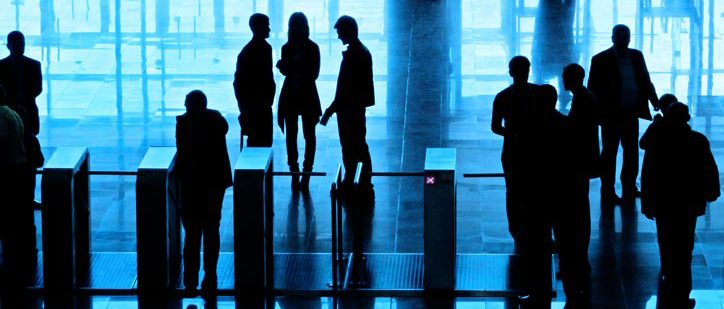Browsing the Globe of Corporate Security: Key Insights and Best Practices
Browsing the Globe of Corporate Security: Key Insights and Best Practices
Blog Article
From Cybersecurity to Physical Procedures: Strengthening Company Security in an Altering World
In today's swiftly progressing digital landscape, the relevance of business protection can not be overemphasized. As cyber risks become widespread and increasingly sophisticated, companies must go past conventional cybersecurity actions to protect their procedures and assets - corporate security. This is where the combination of physical security actions becomes vital. By combining the strengths of both cybersecurity and physical safety and security, companies can produce a comprehensive defense method that deals with the varied array of risks they encounter. In this discussion, we will check out the transforming threat landscape, the requirement to incorporate cybersecurity and physical security, the application of multi-factor verification procedures, the relevance of staff member awareness and training, and the adaptation of protection actions for remote workforces. By examining these key locations, we will certainly get beneficial understandings right into how organizations can strengthen their business safety in an ever-changing globe.
Comprehending the Transforming Risk Landscape
The advancing nature of the modern globe requires an extensive understanding of the altering danger landscape for reliable corporate safety and security. In today's interconnected and electronic age, hazards to business security have ended up being more intricate and innovative. As modern technology breakthroughs and organizations end up being increasingly reliant on digital facilities, the potential for cyberattacks, information breaches, and other safety breaches has significantly enhanced. It is essential for companies to stay educated and adapt their protection gauges to deal with these evolving hazards.
One trick aspect of comprehending the transforming danger landscape is identifying the various types of dangers that organizations encounter. Cybercriminals are continuously establishing brand-new techniques to manipulate susceptabilities in computer system systems and networks. These hazards can vary from malware and ransomware attacks to phishing frauds and social design methods. Furthermore, physical threats such as theft, vandalism, and company reconnaissance remain widespread issues for companies.
Monitoring and evaluating the danger landscape is crucial in order to identify possible dangers and vulnerabilities. This includes remaining upgraded on the most up to date cybersecurity patterns, analyzing hazard intelligence reports, and carrying out regular threat evaluations. By understanding the altering hazard landscape, organizations can proactively carry out appropriate safety actions to minimize risks and secure their assets, online reputation, and stakeholders.
Integrating Cybersecurity and Physical Protection
Integrating cybersecurity and physical security is critical for detailed business defense in today's interconnected and electronic landscape. As organizations progressively depend on modern technology and interconnected systems, the borders in between physical and cyber risks are coming to be obscured. To properly guard against these risks, a holistic strategy that combines both cybersecurity and physical security steps is important.
Cybersecurity concentrates on safeguarding electronic possessions, such as systems, data, and networks, from unapproved gain access to, disruption, and theft. Physical protection, on the various other hand, encompasses steps to secure physical assets, people, and centers from susceptabilities and risks. By integrating these 2 domain names, organizations can deal with vulnerabilities and risks from both digital and physical angles, therefore enhancing their general security stance.
The integration of these 2 disciplines allows for a much more comprehensive understanding of protection threats and enables a unified feedback to events. Physical accessibility controls can be boosted by integrating them with cybersecurity procedures, such as two-factor authentication or biometric recognition. Cybersecurity steps can be matched by physical protection procedures, such as monitoring video cameras, alarms, and safe gain access to points.

Carrying Out Multi-Factor Verification Measures
As companies significantly focus on detailed safety and security actions, one effective technique is the execution of multi-factor authentication procedures. Multi-factor about his authentication (MFA) is a protection technique that requires users to offer several types of identification to access a system or application. This approach navigate to this site includes an additional layer of protection by combining something the user recognizes, such as a password, with something they have, like a safety or a finger print token.
By applying MFA, organizations can significantly improve their protection stance - corporate security. Standard password-based verification has its limitations, as passwords can be conveniently jeopardized or neglected. MFA alleviates these risks by including an added verification variable, making it harder for unauthorized individuals to access to sensitive information
There are numerous kinds of multi-factor authentication methods offered, consisting of biometric authentication, SMS-based confirmation codes, and equipment symbols. Organizations require to analyze their specific requirements and pick the most suitable MFA solution for their needs.
Nonetheless, the application of MFA ought to be carefully planned and executed. It is critical to strike an equilibrium in between safety and use to avoid customer stress and resistance. Organizations needs to also take into consideration prospective compatibility issues and give adequate training and assistance to guarantee a smooth shift.
Enhancing Employee Understanding and Training
To reinforce corporate security, companies need to prioritize boosting staff member recognition and training. In today's rapidly developing risk landscape, staff members play an essential role in guarding a company's sensitive information and assets. Unfortunately, many safety and security breaches take place because of human error or lack of recognition. As a result, companies require to spend in extensive training programs to educate their employees about prospective risks and the most effective techniques for reducing them.
Reliable employee awareness and training programs ought to cover a variety of subjects, consisting of data protection, phishing attacks, social design, password health, and physical protection actions. These programs must be tailored to the details demands and responsibilities of various staff member duties within the company. Normal training simulations, sessions, and workshops can aid employees develop the required skills and knowledge to react and recognize to safety dangers successfully.
Additionally, companies must encourage a society of safety awareness and provide continuous updates and pointers to maintain workers informed concerning the most recent threats and reduction techniques. This can be done via interior interaction channels, such as e-newsletters, intranet websites, and e-mail campaigns. By cultivating a security-conscious workforce, companies can substantially decrease the chance sites of safety incidents and secure their valuable possessions from unapproved gain access to or concession.

Adapting Safety And Security Procedures for Remote Labor Force
Adapting company security steps to accommodate a remote workforce is vital in making certain the protection of sensitive information and assets (corporate security). With the enhancing pattern of remote job, companies need to apply ideal security measures to mitigate the risks associated with this new way of working
One essential aspect of adapting security measures for remote job is developing safe and secure interaction networks. Encrypted messaging platforms and online private networks (VPNs) can help protect sensitive info and avoid unauthorized access. In addition, companies must impose making use of strong passwords and multi-factor verification to boost the safety of remote gain access to.
Another important factor to consider is the execution of safe remote gain access to services. This involves giving workers with protected access to company sources and data via online desktop infrastructure (VDI), remote desktop computer procedures (RDP), or cloud-based solutions. These technologies ensure that delicate info remains protected while making it possible for workers to do their functions effectively.

Last but not least, comprehensive safety and security understanding training is crucial for remote employees. Training sessions ought to cover finest techniques for firmly accessing and handling sensitive information, determining and reporting phishing attempts, and preserving the general cybersecurity health.
Final Thought
Finally, as the threat landscape continues to develop, it is important for organizations to strengthen their safety and security determines both in the cyber and physical domains. Integrating cybersecurity and physical safety and security, executing multi-factor authentication steps, and improving employee awareness and training are important steps towards attaining durable business safety. Furthermore, adapting security measures to suit remote labor forces is critical in today's transforming globe. By executing these steps, organizations can minimize dangers and safeguard their valuable properties from possible risks.
In this discussion, we will certainly check out the changing danger landscape, the need to incorporate cybersecurity and physical safety and security, the execution of multi-factor authentication measures, the value of employee understanding and training, and the adaptation of safety measures for remote workforces. Cybersecurity actions can be matched by physical protection measures, such as monitoring cams, alarms, and safe accessibility points.
As companies significantly prioritize detailed protection steps, one efficient strategy is the implementation of multi-factor verification steps.In verdict, as the threat landscape continues to progress, it is critical for organizations to enhance their safety gauges both in the cyber and physical domain names. Integrating cybersecurity and physical safety and security, carrying out multi-factor verification actions, and enhancing employee understanding and training are necessary actions in the direction of attaining robust corporate safety and security.
Report this page